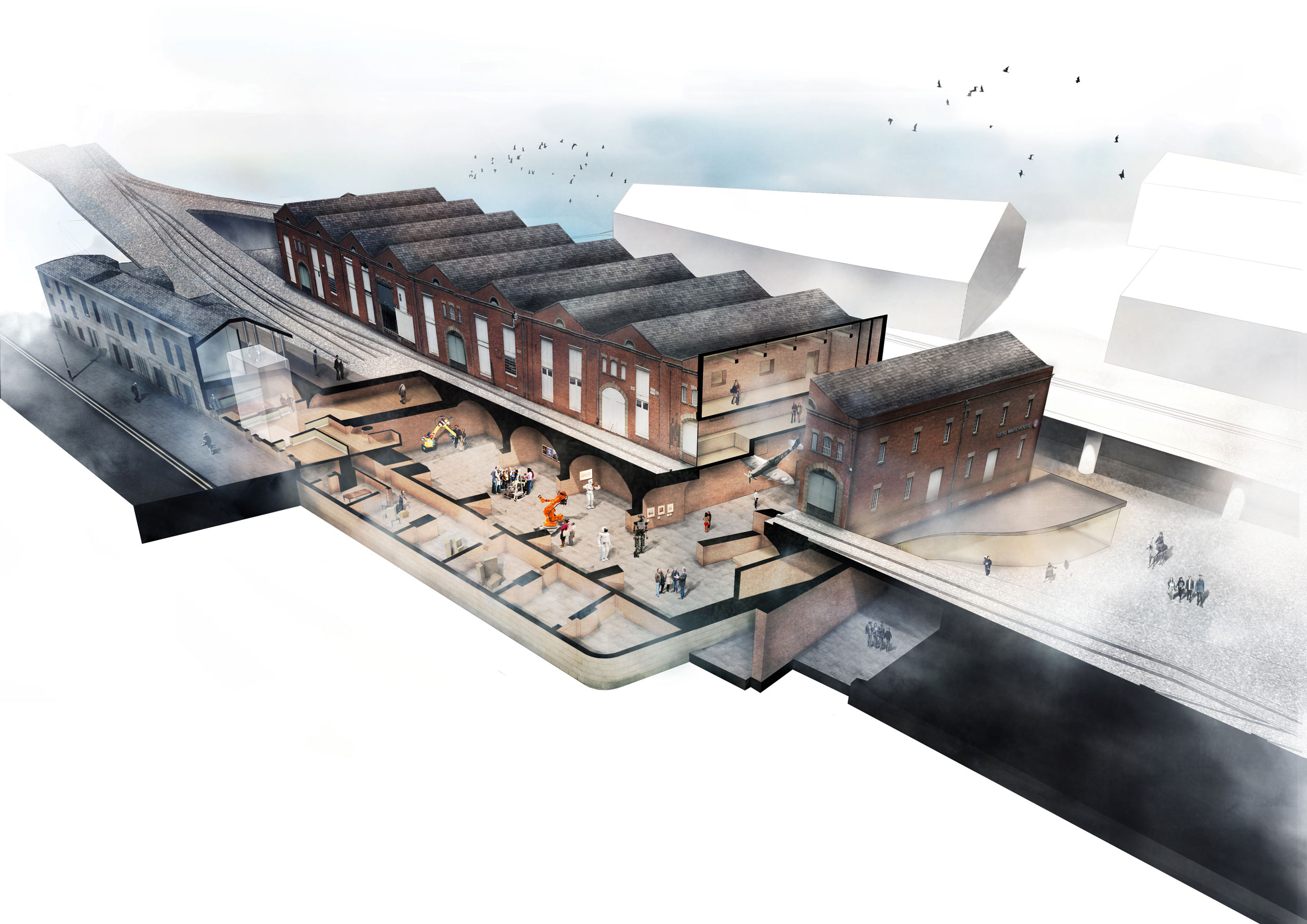By Kate Campbell-Payne and Roger Highfield
The Chancellor, George Osborne MP, today announced a £3 million investment to create a new special exhibition space at the Museum of Science & Industry in Manchester.
Speaking in the Museum at the official launch and celebration of Manchester as the European City of Science 2016, Europe’s greatest scientific gathering, the Chancellor set out further Government plans to prioritise science investment in the North West.

Mr Osborne said that it was ‘great to be back’ in the Museum, not just in an official capacity but as a local resident who visits with his children.
He told the audience of leading figures that Manchester was the first great scientific city in the modern world and that it was developing into a global force.
Today’s investment will allow the Museum to take forward ambitious plans to convert the brick-vaulted basement of its historic 1830 Warehouse – the first ever railway warehouse – into a venue for world-class exhibitions that will inspire the next generation of scientists and engineers.

This will help shift the centre of gravity of the Science Museum Group towards the north and enable the Museum of Science & Industry to develop its own touring exhibitions, along the lines of Collider. ‘It is a real pleasure to be here as a near local MP and someone who believes passionately in the future of the city,” he said.
Director Sally MacDonald said the investment would enable the iconic site to create a ‘really stunning’ gallery: “With the support of our partners, we want to develop ground-breaking exhibitions that can tour internationally, shining a global spotlight on our collections and our great city of Manchester.”
She hopes the new gallery will help boost the current audience of around 700,000 visitors by tens of thousands more. “This is a place where ideas can change the world, from industrial revolution to today and beyond.”
Today’s announcement comes just days after the Chancellor announced plans for a £235 million Sir Henry Royce Institute for Advanced Materials Research and Innovation at the University of Manchester. “I want it to be the best in the world,” he told the audience.
This, the centrepiece of investment plans for the region announced last week, will build on two centuries of innovation in developing materials that has underpinned Manchester’s rise as one of the first globalised industrial cities.
The £3 million Government investment in the Museum is in addition to an £800,000 grant that funded preparatory work, including the selection of the best location for the new exhibition space from across the Museum’s historic 7.5 acre site.
It was at the Museum’s Power Hall in June that George Osborne announced his intention to create a “Northern supercity” to rival London, New York and other major cities by building HS3, a high speed rail link between Manchester and Leeds.
At the launch was Professor Brian Cox, who still lectures in the university and conducted a bioluminescence experiment in the Museum for primary schoolchildren, along with the Chancellor. He remarked on how, over the past decade, more and more children were inspired by STEM.

Prof Cox laid down a challenge to all the political parties in the coming election to ring fence the science budget, or indeed increase it, to match the huge research budgets of Germany and America.
Prof Cox said that the UK can indeed be the best place in the world to do science, building on its infrastructure of world class schools, universities and museums. “I am extremely optimistic about the future.”
Sir Richard Leese, leader of Manchester City Council, said that the city has a tally of around 25 Nobel Prize winners. “Science is at the heart of Manchester, its past present and future,” he said, adding that around 50,000 people in Greater Manchester are employed in science and technology.
Manchester is the home of many world changing science achievements: John Dalton’s atomic theory of the 19th Century; the pioneering work of James Joule in thermodynamics; Rutherford’s work to reveal the atomic nucleus by smashing helium nuclei into gold foil; the world’s first programmable computer in 1948; the birth of Louise Brown, the world’s first ‘test-tube’ baby, in 1978; and in 2004 when Manchester made headlines with ‘graphene’ an atom-thick wonder material.
That long history is celebrated throughout the Museum of Science & Industry and in its collections, ranging from Richard Arkwright’s spinning frame (1775) to the creation of Terylene, the world’s first wholly synthetic fibre (1941) , and the isolation of graphene just a decade ago.
The Museum is constantly innovating new ways to tell this story so as to make science accessible and enticing for its visitors, from its partnership with the largest STEMNET contract outside of London to the annual Manchester Science Festival.
The Museum’s major partnerships include relationships with the Wellcome Trust and the University of Manchester with whom the Museum is working on a new exhibition on graphene, which will open in 2016.
The Museum audience was also addressed by Rowena Burns, CEO of Manchester Science Partnerships, on the ‘limitless opportunities’ for life sciences in the region. Plans for the European City of Science, “an unmatched opportunity to showcase our science and innovation to the world”, were outlined by Prof Luke Georghiou, vice president for research and innovation at the University of Manchester; and Professor Colin Bailey, Vice-President of the University of Manchester, told the audience that the new Sir Henry Royce Institute will “ hit the sweet spot in the innovation chain of materials” to speed their delivery from lab bench to market.